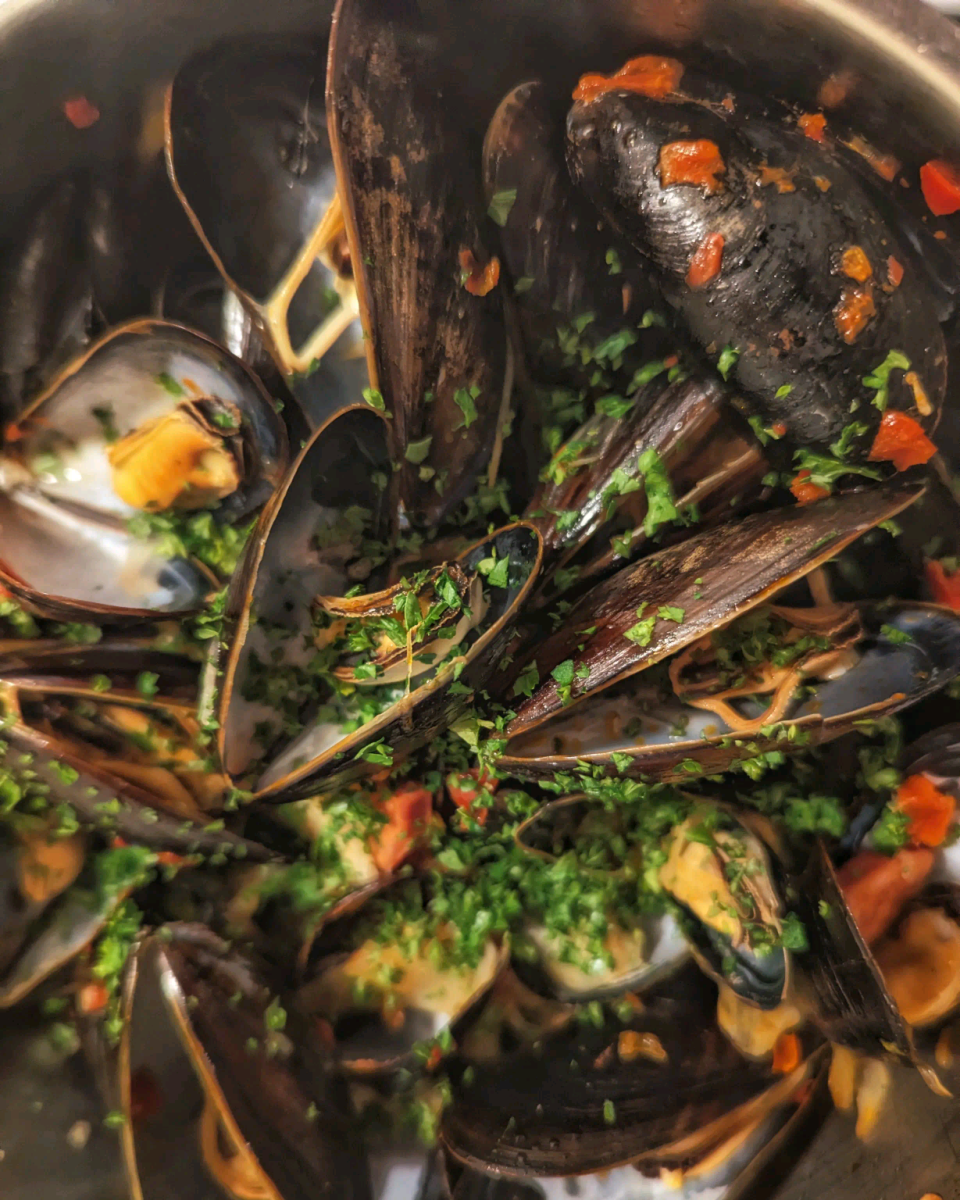
Banished to the furthest corner of American grocery stores sits the humble can of tinned fish. Its reputation, undoubtedly, precedes itself. To some, it carries a sense of flavorful nostalgia. To others, it’s off-putting at best and vile at worst. But why is there such a disconnect? And, more importantly, how do we dismantle these harmful preconceived notions?
Ironically, this stigma traces back to a time when they were held in esteem: World War II. In the mid-1900s, canned goods exploded in popularity in the West. According to the United States Department of Agriculture, over 4.1 billion jars were canned in homes and community centers at its peak in 1943. They were consumed by soldiers and civilians alike.
Canned goods were a symbol of patriotism and perseverance. Cartoons even showed Uncle Sam, the personification of the U.S., pouring fresh and canned fruit from a cornucopia and conveying the message, “If you were American, you ate out of a can.” Americans often bestowed the honor of eating out of a can to others, giving out government-issued rations to civilians in war-torn countries.
As the war came to an end, Americans left cans in the past. After many years and enduring much pain, what once was a symbol of greatness only reminds them of hardship. These days, canned goods are reserved for emergency food supplies.
In contrast, other countries still hold tinned fish in high regard. Spain, Portugal and China all have decades of rich history and cultural ties to the product, with China being the second largest exporter in the world. Much like in America, these countries saw a massive boom in the production of canned goods during World War II. While Americans saw canned goods as a means to an end, other countries fully integrated them into their diets and cultures.
Spain and Portugal take tremendous pride in exporting artisanal delicacies all over the world with companies such as PYSCIS and Nuri. China uses canned goods as a way to highlight local delicacies and share them with the rest of the region.
According to historian Zou Zetao, “Ningbo bamboo shoots…[a] Ningbo specialty, once canned, the dish spread from this Yangtze River Delta port city through the rest of the region, before eventually hitting Shanghai. In the process, the cuisine of the entire Delta region was altered.” He goes on to say that “merchants from Yancheng in the eastern province of Jiangsu were selling canned Shanghai-style drunken fish and crab, produced by local companies to meet local tastes.”
Canned Food Alliance’s survey explores Americans’ preconceived notions of tinned fish. Nearly 60 percent of Americans believe canned food is not as nutritious as fresh food despite studies proving otherwise. Perhaps this perception Americans hold is what keeps tinned fish in the so-called doghouse. This affront even bleeds into mass media such as in movies like “Cloudy With A Chance Of Meatballs” that have damaged the perception of canned sardines for millions of people. Thankfully, efforts around the world are helping to fix that.
Mei Liao is a content creator who explores tinned fish through the lens of those unfamiliar with the history or culture behind it.
“[Portugal and Spain] have this culture of preserving food, and canning in it of itself is a luxury. I think of it akin to winemaking,” Liao said in an interview with The Statesman. “So you can have cheap wines. You can have expensive wines. It’s a way of preserving the grapes and that fermentation process in and of itself is an art. But in the US, canning has become commoditized…and viewed that there’s no culinary culture behind it.”
She believes the way to challenge tinned fish’s poor reputation is through education.
“One really big part of dismantling it is reframing how we view it instead of a commodity product…we talk about how there is diversity and differentiation within it,” Liao said. “There’s a tremendous difference in fish that you’re going to get in the Pacific [or] Japan versus the ones that you’re going to get off the coast of Morocco. A lot of people don’t know these other types of canned seafood, so there’s something that needs to be said to bridge the gap. Part of it is just awareness. The other part is a little bit of education.”
Educating the public is just half of the battle; the other half revolves around how people interact with tinned fish — a task best fit for chefs. Preaching seasonality and variety is crucial, but consumers need to taste the unique flavors of tinned fish at the various eateries they trust.
The recent push for seasonal, local produce and farm-to-table relationships has done wonders for niche foods in the public’s eye. Tinned fish has been begging for that treatment, and people have finally taken notice.
“Trends come and go in the restaurant industry, right now tinned fish is really striking a cord…not necessarily in restaurant menus but in bar menus. It’s something that competes in the same space as charcuterie,” Liao said. “Instead of going to a wine bar and ordering a charcuterie board with meats and cheeses, you can order a can of fish.”
After being the laughing stock in the culinary world, things are starting to look up. Hopefully tinned fish continues to pop up in menus and home kitchens until it achieves its former glory.


















